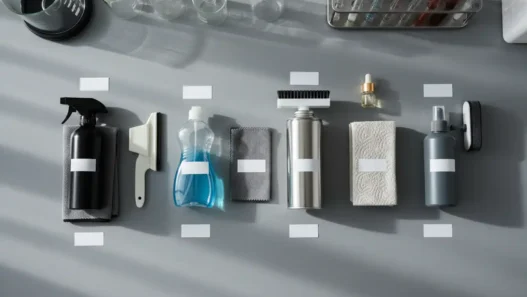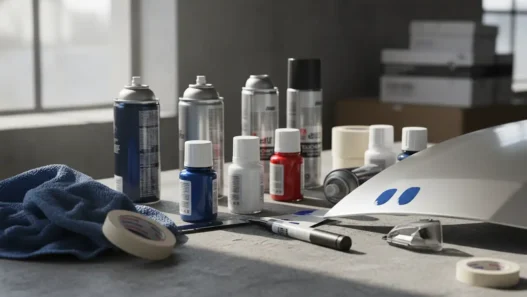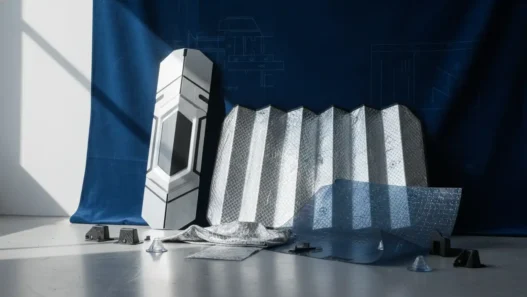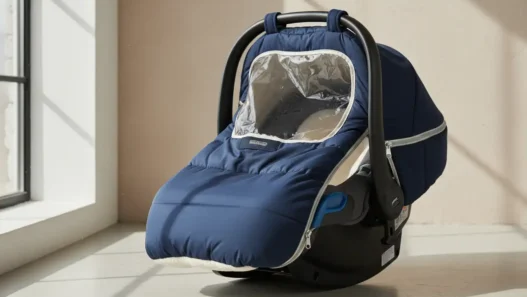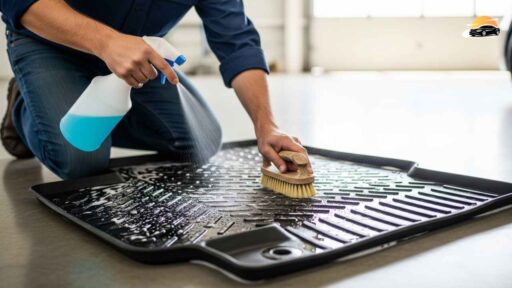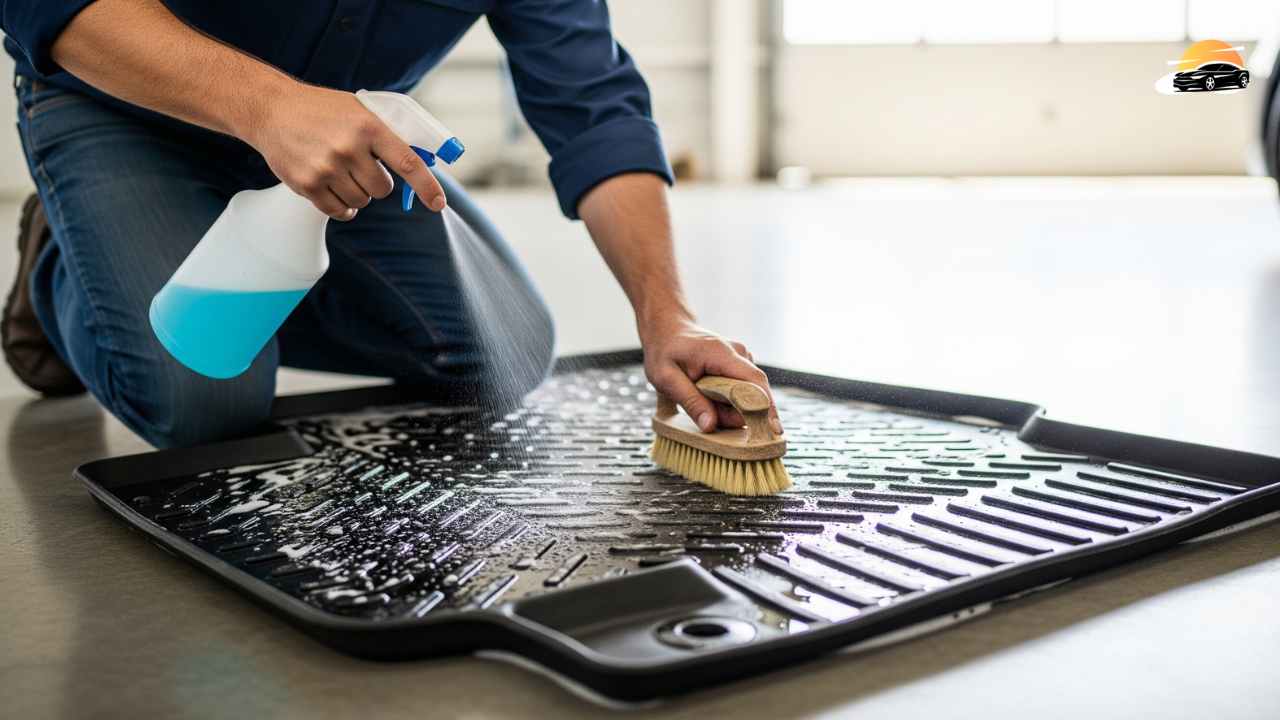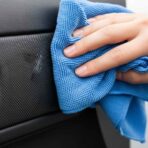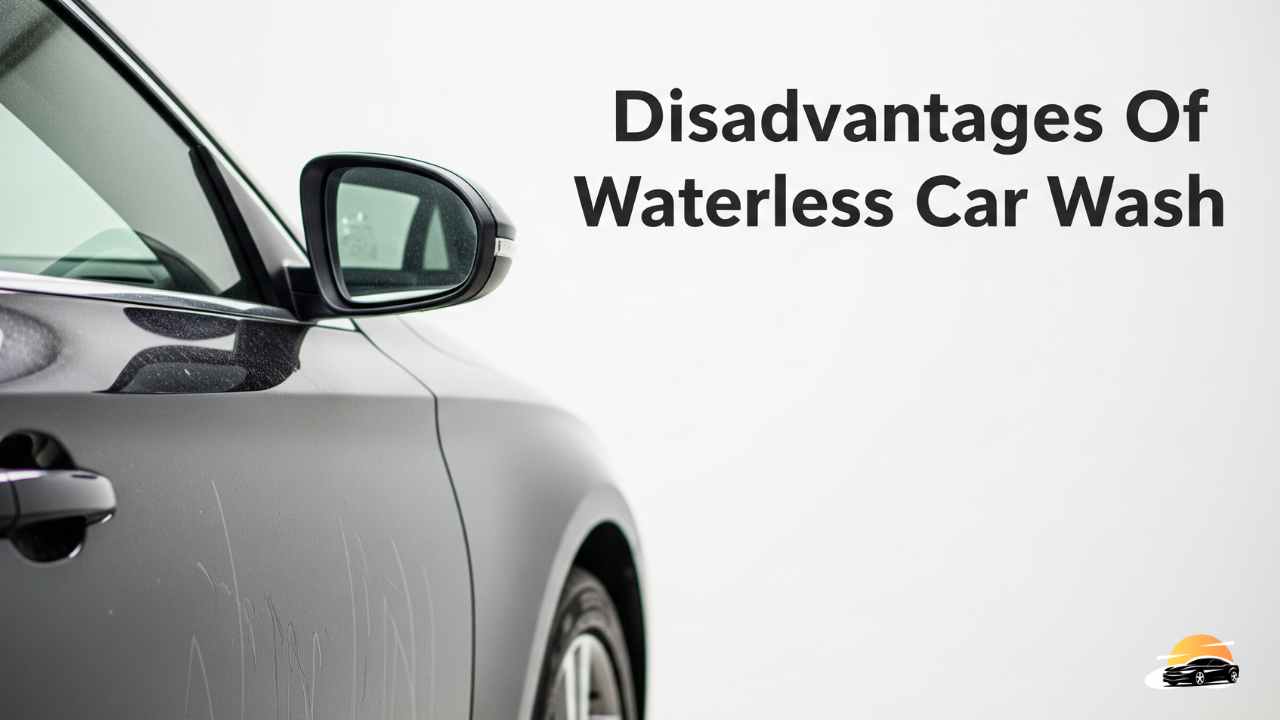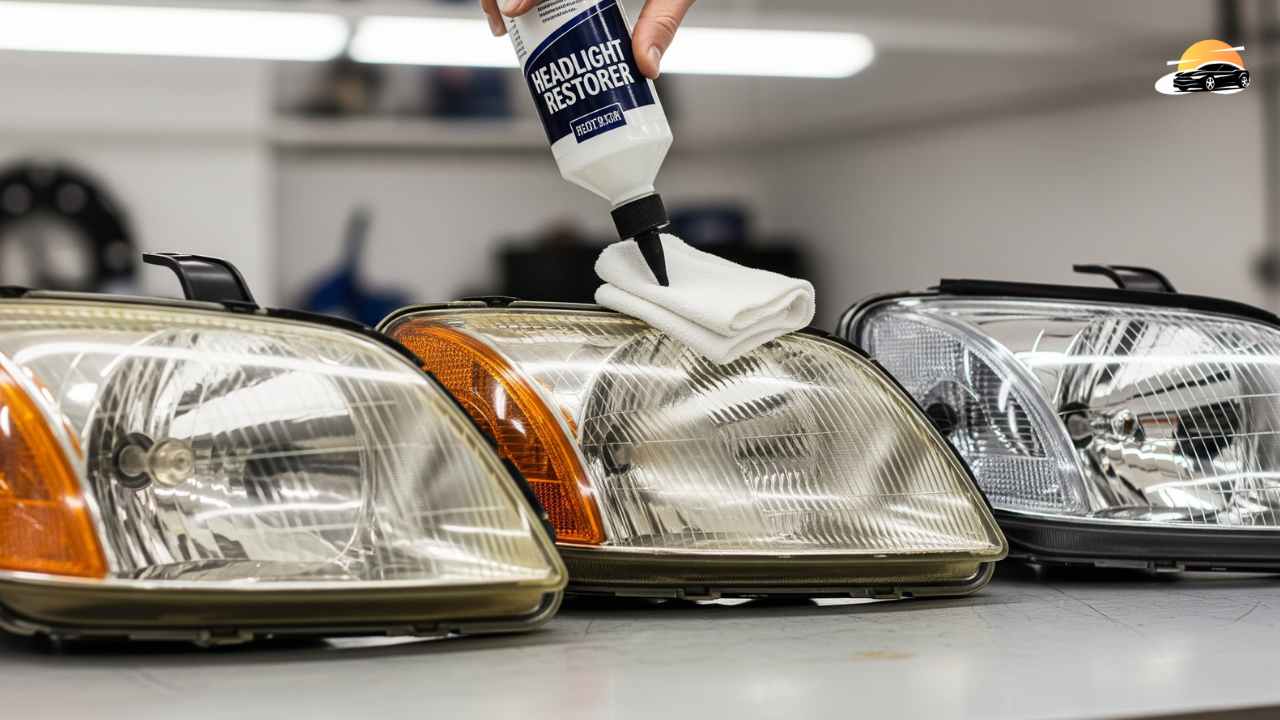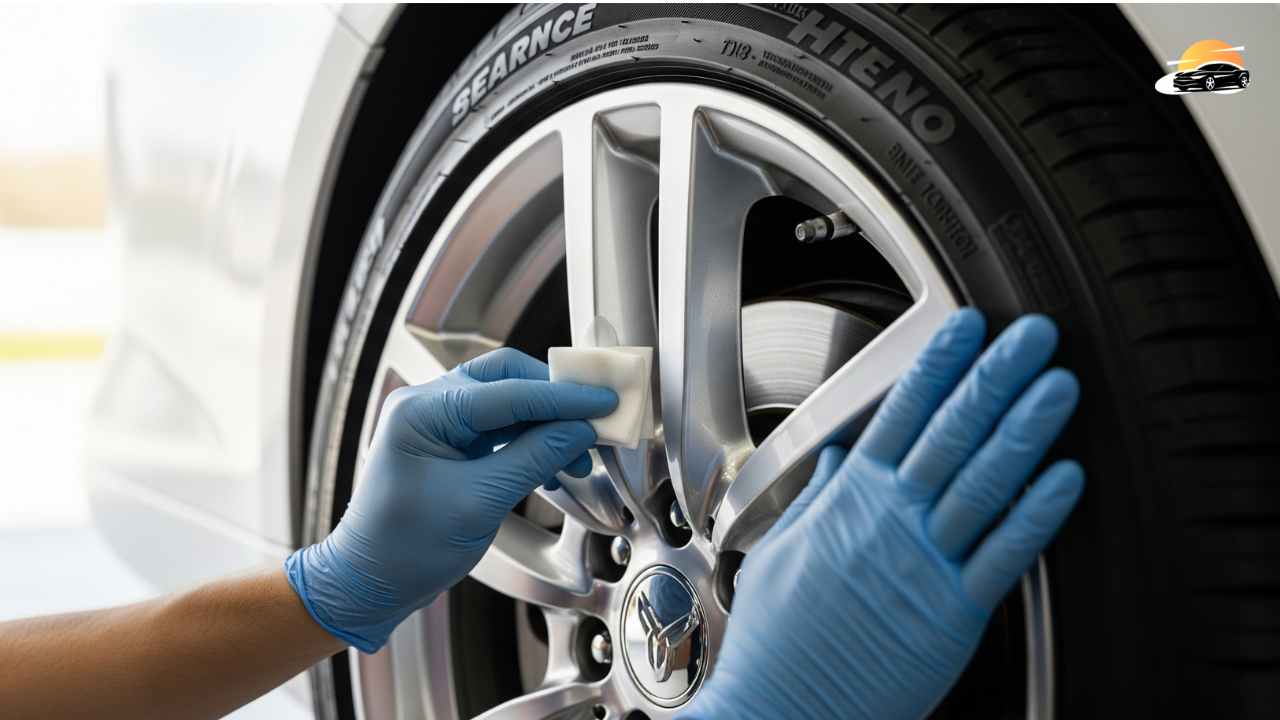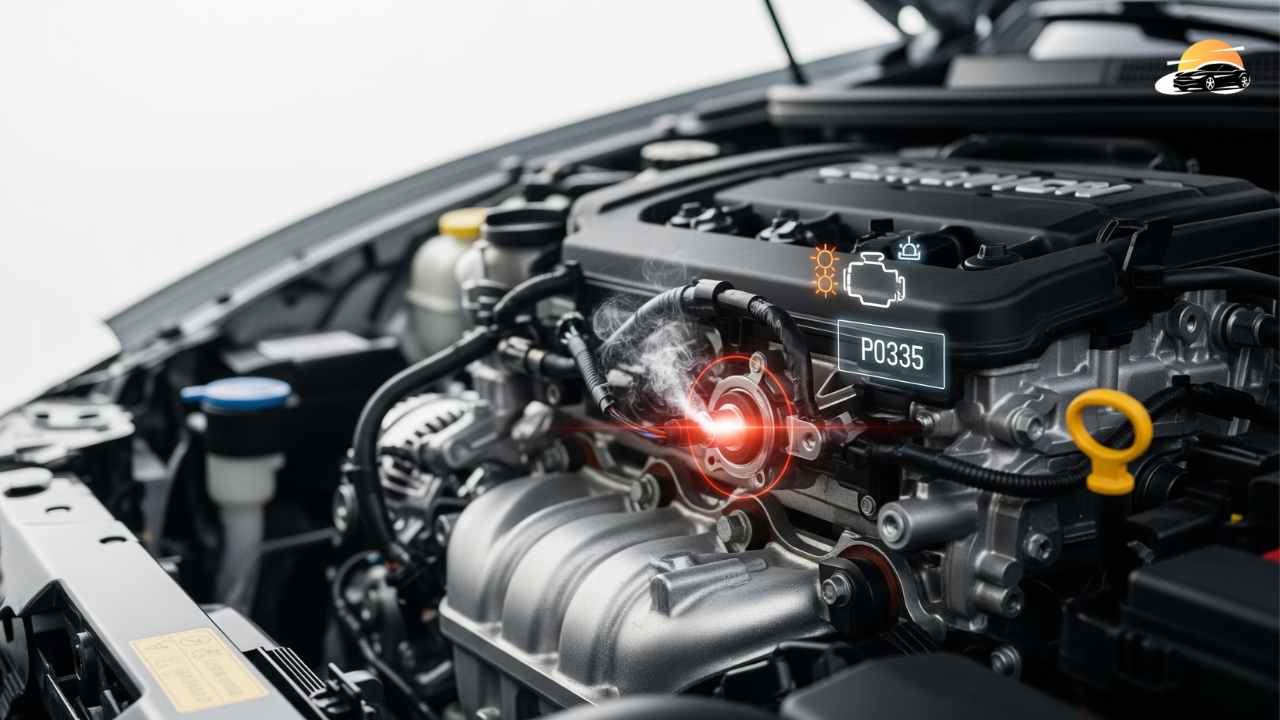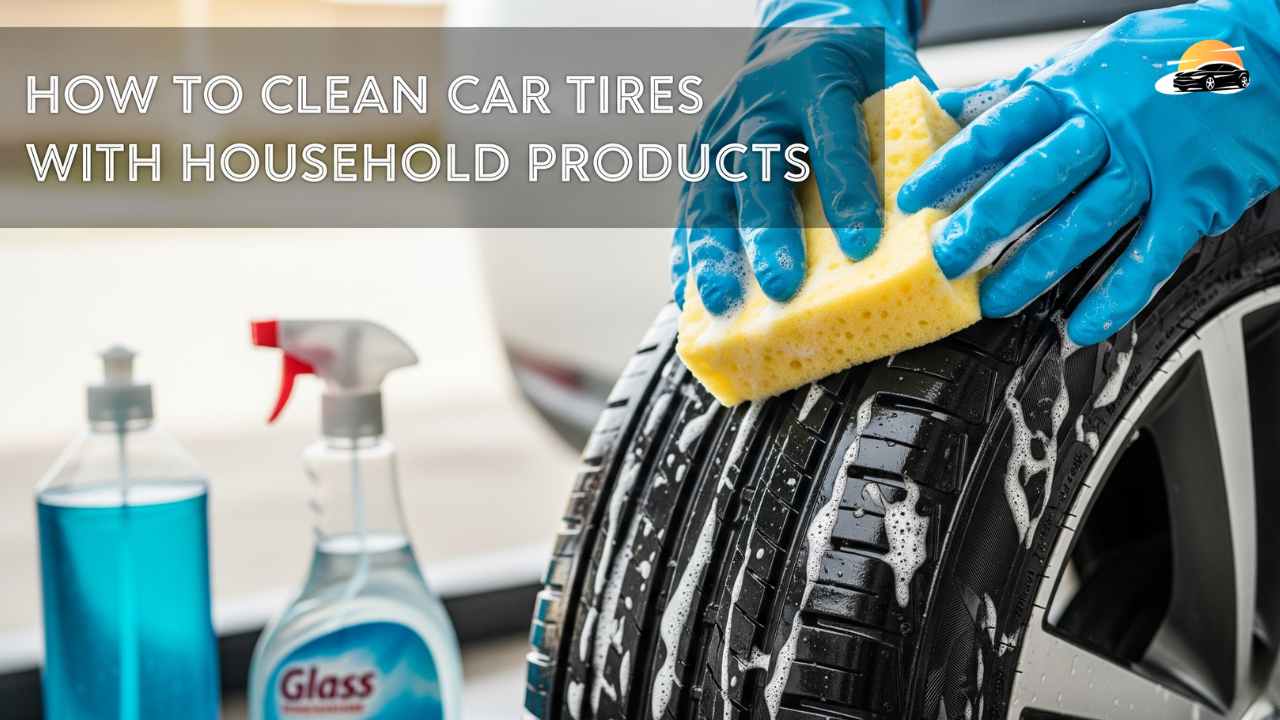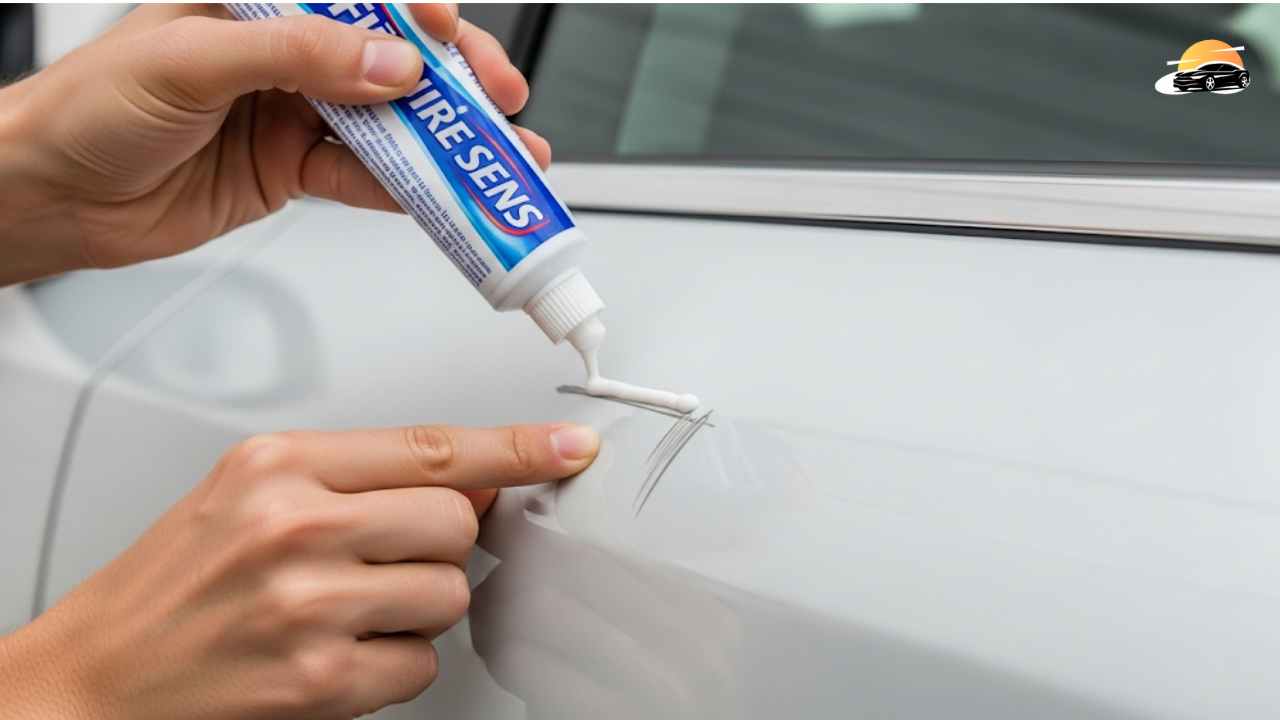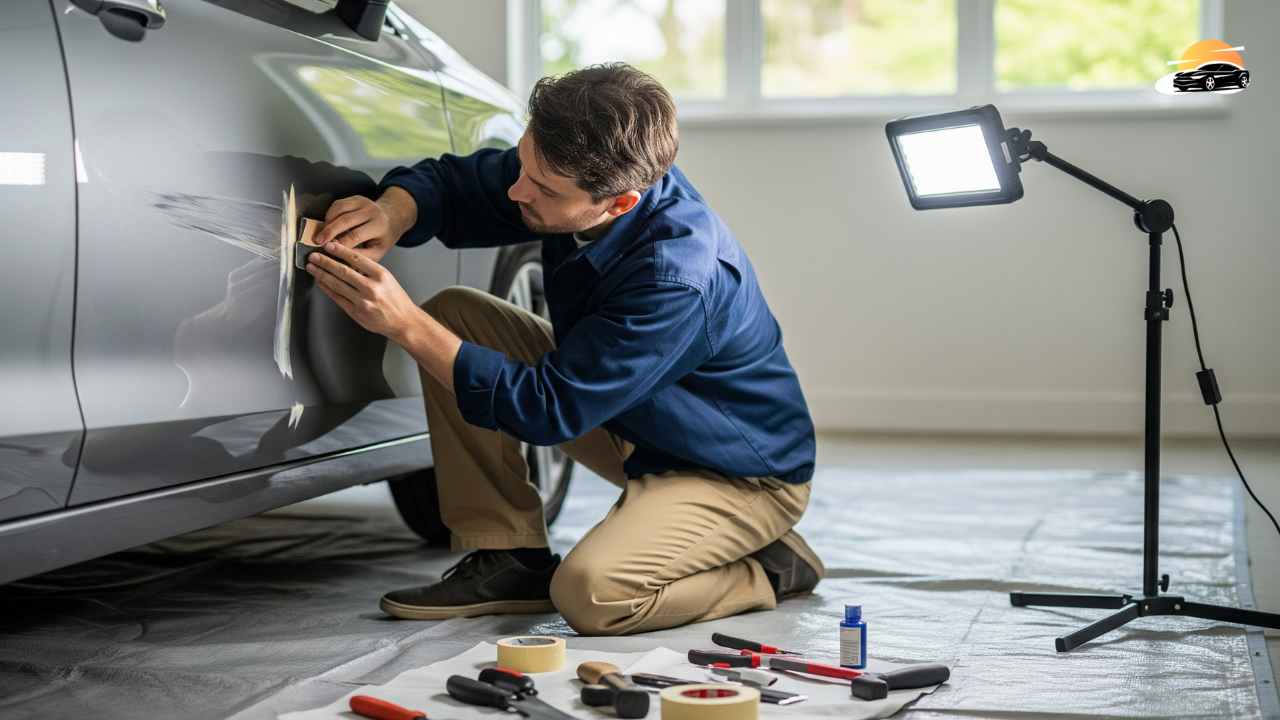In 2025, the global automotive accessories market crossed $570 billion, and floor mat sales alone accounted for nearly $30 billion, according to Mordor Intelligence. That might look like a small corner of the car industry, but it’s not. Rubber floor mats, the type you kick with muddy boots on a rainy day, have become a microcosm of how consumer behavior, branding, and car care intersect.
Here’s the tension: cleaning rubber mats sounds basic, even boring. Yet brands like WeatherTech and Husky Liners have turned this routine into a premium lifestyle pitch. They’ve monetized a once-overlooked product and trained drivers to obsess over mat maintenance like they do an iPhone screen. The stakes? A mix of consumer loyalty, eco-conscious calls for reusability, and a broader accessories race that investors are quietly watching.
The Data
Let’s anchor this in facts. The details are eye-popping:
According to Grand View Research, the global car mat market is projected to grow at a 5.9% compound annual growth rate (CAGR) through 2030, with rubber products leading due to durability.
WeatherTech, the Illinois-based heavyweight, reportedly owns over 50% of the U.S. rubber mat market share, with 2023 revenues north of $500 million (sources say numbers are higher, though privately held firms don’t disclose).
Consumer data from Auto Pacific shows 72% of car buyers rank floor mats as a ‘top 5’ accessory, making it more influential than roof racks or even smart dash cameras.
The lesson is clear: rubber mats are not throwaway items. The practice of keeping them clean has gone from afterthought to mainstream car-care ritual. And companies didn’t just sell mats, they sold the story of clean mats as a proxy for pride in ownership.
Why Bother Cleaning Your Car Mats?
Let’s be honest: wiping down your dashboard or vacuuming crumbs feels more urgent than dragging mats out of the car. But here’s the thing—your floor mats quietly take the worst beating. Every step you take outside, mud, road salt, and parking lot oil stains end up ground into that surface. And while these mats look tough, they’re basically the gatekeepers protecting your car’s actual flooring. Ignore them, and sooner or later, the “protected” part stops holding up.
Protecting the Investment Under Your Feet
Call it boring maintenance, but clean mats aren’t just about looks. Dirt, water, and salt tend to slip through grimy surfaces and down into the carpet underneath. Over time, that moisture can lead to moldy smells at best… or corrosion of the vehicle’s metal floorboards at worst. Sources say most people don’t notice the damage until resale time, at which point it’s too late to spin the story. So, yeah—it’s routine cleaning, but the payoff is measurable: longer carpet life and higher trade-in value.
Making the Interior Look (and Feel) Nicer
Here’s what nobody at the dealership will admit: “clean car feel” isn’t just about the leather seats or shiny dashboard. Mats play a big role in whether your interior feels inviting or, well, kind of neglected. A set of spotless mats immediately makes your car look newer—even if it isn’t. This smells like psychological trickery, but it’s backed by detailers who swear customers rate the entire car higher when the mats are spotless.
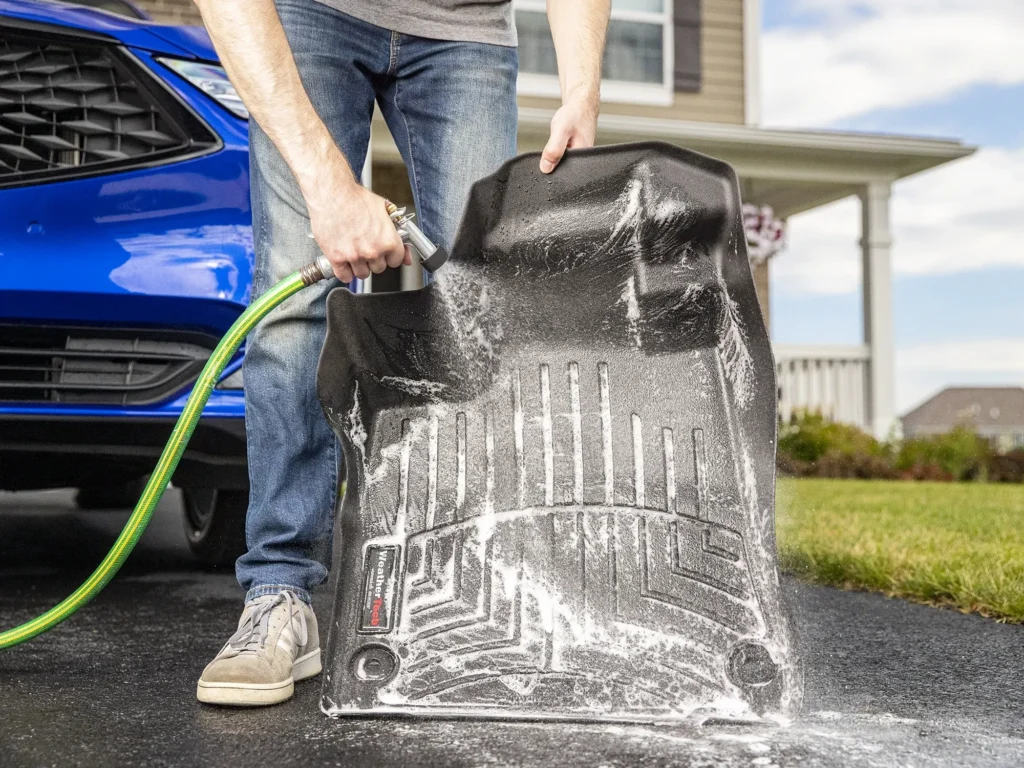
Getting Ready: Supplies That Actually Work
Skipping prep usually means wasting twice as much time mid-clean. Before you start, line up what you’ll need. The list varies depending on whether you’ve got rubber mats (most durable option) or fabric ones (more common in older models). Since we’re focusing on rubber:
Recommended for Rubber Mats:
Hose with spray nozzle (or just a bucket if you’re decidedly low-tech)
Stiff-bristle brush (plastic, not metal—you don’t want gouges)
Car soap, rubber-safe cleaner, or heavy-duty solution for “I-dropped-my-coffee-three-months-ago” stains
Clean bucket
Towels or a space outside to dry
Optional: rubber conditioner spray for that showroom look (arguably more marketing than necessity, but your call)
(For fabric mats, think vacuum, carpet cleaner, and maybe a rental shampoo machine. But that’s another story.)
Prepping the Mats
First rule here: Mats need to come out of the car. Yes, that means unhooking the anchors and hauling them out. It seems obvious, but too many folks try to spray them down inside the cabin—the result is a swampy mess that never fully dries.
Once outside, give them a few shakes or even smack them against a wall. Loose gravel, Cheerios, and sand will pour out, making the scrub-down faster.
The Cleaning Steps (Rubber Mats Only)
1. Pre-Rinse
Lay the mat flat on your driveway or patio. Blast it with water. This washes away surface dirt and primes the rubber for your cleaner.
2. Apply Cleaner
Mix your soap and water in a bucket—or spray on a rubber-safe cleaner. The goal is a full coat, especially on heel-marked areas. Let it cling for a minute, but don’t let it dry.
3. Scrub It Down
Time to earn your elbow grease badge. Use the brush to work circular motions over ridges and grooves where dirt hides. Heavier pressure on stained spots is totally worth it. You should see dirty foam rising up. That’s progress.
4. Rinse and Dry
Hit the mats with clean water until every trace of soap is gone—leftover suds equal sticky surfaces. For drying, hang them over a railing or leave them flat in the sunlight. Half-dry mats tossed back into the car = mystery smells within a week. A towel can speed this up if rain clouds are threatening.
Cleaning your mats isn’t glamorous—no glossy commercial is going to tell you it’s “transformative.” But the data is simple: clean mats extend the life of your car’s flooring, improve perceived value, and make the interior feel noticeably fresher. Ignore the step, and you’ll probably pay for it later—literally.
Removing Tough Stains from Your Car Mats
Here’s the thing: dirt is easy. It’s the oil, grease, and mystery spills that actually test your patience. A few quick passes with your vacuum won’t cut it here—you’ll need a smarter game plan.
Techniques That Actually Work
For stubborn patches, don’t be shy about spot-treating. Add extra cleaner right where it counts, let it sit briefly, then scrub like you mean it. When the culprit is oil or grease, a degreasing formula is usually more effective than basic soap. That pause before scrubbing? It gives the cleaner time to break things down.
Products Worth Considering
Most labels shout about being “heavy-duty” or “professional strength.” Reality check: not all live up to that promise. Focus on cleaners that specifically mention tackling grease and grime. Interior-safe automotive cleaners can work too. And yes, the boring advice still matters—test in a hidden spot first. Damaging the rubber mats while trying to save them… well, that smells like a lose-lose move.
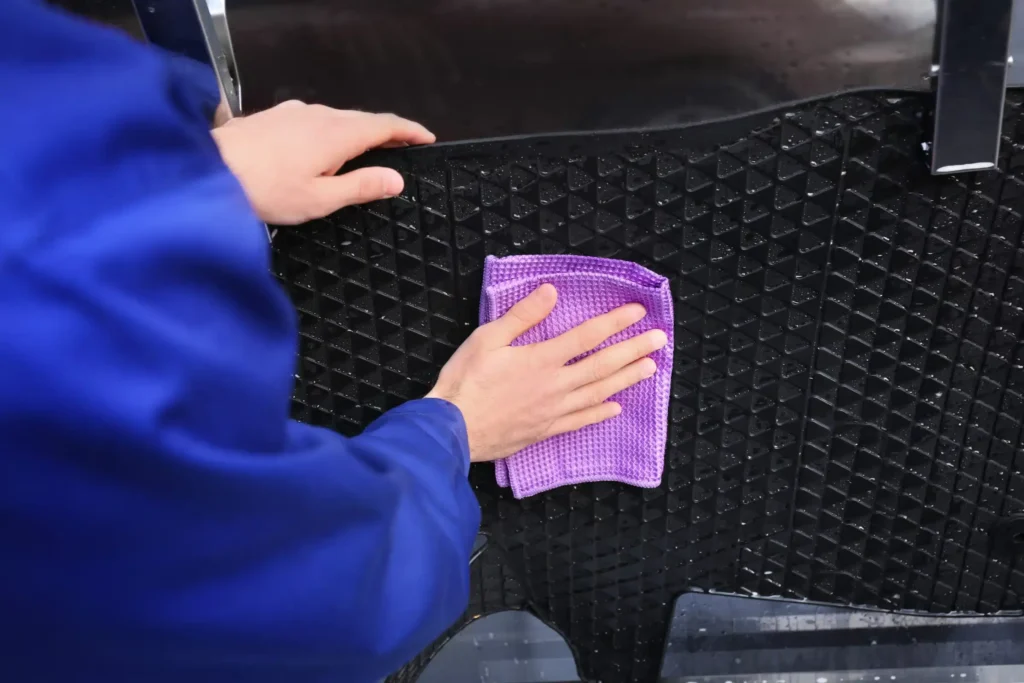
Cleaning Cloth Car Mats (Without Falling for the “Quick Fix” Hype)
Here’s the thing: cleaning cloth mats isn’t the same as rinsing off rubber ones. Fabric traps dirt differently—it hangs on like a guest who won’t leave. And while some guides make this sound like a five‑minute job, that’s not really true.
Step 1: Vacuum Like You Mean It
Cloth mats hold dust down in the fibers, where you can’t see it at first glance. A decent vacuum—preferably one with strong suction—will pull out most of it. Don’t just do one lazy pass. Go back and forth, then side to side, so the hidden grit doesn’t survive round one.
Step 2: Treat the Ugly Spots
Spills happen. Coffee, soda, the mysterious stain you “don’t remember”? This is where a carpet or upholstery cleaner comes in. Spray directly on the trouble zones, follow the directions (more or less—those labels can be optimistic), and blot with a cloth. Sometimes, light scrubbing is the only way to convince the stain to leave.
Step 3: Wash, Rinse, and Wait… Longer Than You’d Like
Some mats can handle a deeper wash with water and carpet solution—either by hand or with a machine. The catch: drying takes much longer than with rubber mats. And yes, they must be fully dry before you put them back in your car. Otherwise, you’re basically building a small science experiment in your floorboards. This smells like free advice nobody in the cleaning aisle will give you—but it matters.
The People
“A clean car mat isn’t just about hygiene. It’s about identity,” Michael Campanella, a former WeatherTech marketing executive, told us. He pointed to a decade-long brand play that reframed mats as status objects—cast in made-in-America steel molds, sold at a premium, often pitched during Super Bowl ads. “Think about it. Nobody brags about vacuuming their carpet mats. But rubber mats? They’ve been culturally reframed as the first defense against chaos.”
On the detailer side, operators see this trend daily. Sofia Ramirez, who runs a professional detailing shop in Austin, said DIY guides for mat cleaning have exploded. “Customers ask how to do it step by step because they’re afraid of ruining $200 mats,” she explained. “That wasn’t the case ten years ago when you could just spray and forget.”
Even auto investment analysts are paying attention. Brandon Hughes at J.P. Morgan claimed that accessories—especially reusable rubber goods—are quietly outpacing some aftermarket electronics. “You’d be surprised, but mats have higher retention rates. People take them when they sell the car, which creates repeat cleaning and care spending.”
The Fallout
What does it mean in practice? A ripple effect across three fronts:
Consumer Behavior
Cleaning rubber floor mats has become ritualized. Social platforms like YouTube and TikTok now host thousands of mat-cleaning tutorials, some racking up millions of views. The appeal isn’t just utility—it’s therapy. Step-by-step guides break down power washing, scrubbing, and drying into visual storytelling.Corporate Positioning
WeatherTech doubled down, pushing its own branded cleaners—that’s where the margin hides. Husky Liners launched eco-safe cleaning sprays, hinting at ESG-tailored marketing. Even Walmart and Amazon are promoting bundled “clean + protect” mat kits. The result? The cleaning process itself is commoditized.Industry Consequences
Analysts note that with rubber mats now inextricably linked to cleanliness culture, brands unable to support DIY education risk fading. Smaller aftermarket players are getting squeezed. Meanwhile, professional detailers see rising demand, driving up service costs. Some insiders quietly admit: this smells like over-saturation.
The Step-By-Step Guide (Investor’s Version)
Now, here’s where the consumer narrative connects. A typical mat-cleaning protocol, once ignored, is now content gold. It looks roughly like this:
Remove mats completely – Never clean inside the car.
Shake or vacuum out debris – Essential before applying liquids.
Hose down – Pressure is useful, but moderation prevents warping.
Scrub with rubber-safe cleaner – Plain dish soap works, but brands increasingly push proprietary blends.
Rinse and inspect grooves – Stuck mud is a test of patience.
Dry fully – Sun drying is safest; forced air speeds things up but can cause curling.
Reinstall only when completely dry – Moisture leads to mildew, undermining the core pitch of cleanliness.
Notice how each step generates monetization opportunities: cleaners, brushes, vacuums, drying racks. The mat becomes an ecosystem, not an item.
Bigger Trend: From Trivial to Strategic
Here’s the thing: what started as a simple cleaning ritual is morphing into a strategic shift inside the automotive aftermarkets. Investors are chasing “sticky” revenue streams—products you use daily and feel compelled to maintain. Rubber mats fit.
Think of it: Tesla sells EVs, but they don’t control the market space. Meanwhile, WeatherTech runs recurring ad campaigns positioning itself as the default. And as cars last longer—average vehicle age in the U.S. hit 12.5 years in 2024 (IHS Markit)—owners focus more on upkeep. That is fueling mat-care mania.
The Skeptic’s Take
Is this sustainable? Maybe not. Even experts admit the floor mat boom could plateau. “We’ve essentially financialized dirt management,” said one auto industry researcher half-jokingly. “At some point, consumers will realize that rubber is rubber.”
There are also cracks in perception. In 2025, environmental watchdogs raised concerns that “rubber-safe cleaners” often include microplastics or toxic degreasers. That undercuts the eco-marketing message. Add inflationary pressures—premium mats that once sold for $180 now retail at $240—and you risk consumer pushback.
Cleanliness as Social Signal
Psychologists also weigh in. Clean floor mats, visible every time a passenger steps inside, form micro-judgments. “It’s subtle, but mats communicate order—or chaos,” said Dr. Lisa Ender, behavioral consumer researcher. “As cars double as offices and family zones, small details amplify self-presentation. That is why people follow 15-minute ‘mat-care hacks’ online like scripture.”
Bottom line: clean mats have become the Instagram flex for regular drivers. Not a Ferrari, not a luxury badge—just mats that prove you care. On paper, it’s absurd. In markets, it’s profit.
Closing Thought
So where does this lead? Rubber floor mats—humble, unglamorous, functional—are now symbols of consumer loyalty and corporate strategy. Step-by-step cleaning guides have been weaponized into marketing funnels, creating a recurring accessories economy no one predicted a decade ago.
But here’s the question investors are quietly whispering: when the sheen wears off, will consumers still pay a premium for something as simple as mud control? Or will the once-invisible floor mat bubble finally pop?


